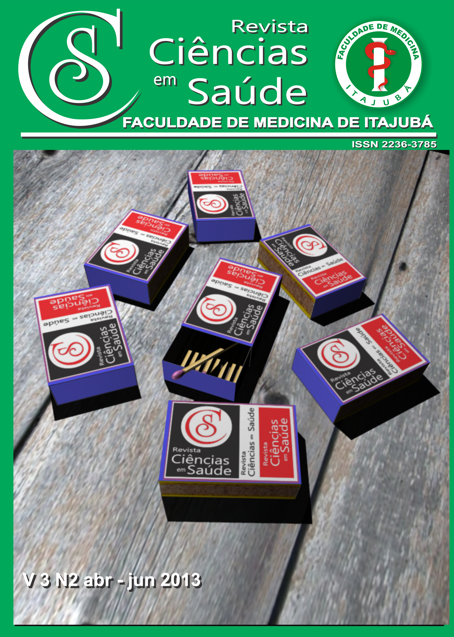Tumor Estromal Gastrintestinal de Localização Esofágica: Relato de Caso/ Gastrointestinal Stromal Tumor Location Esophageal: Case Report
Main Article Content
Abstract
Introdução: Os tumores estromais gastrintestinais (GIST) são considerados as neoplasias mesenquimatosas mais comuns do trato gastrintestinal (TGI). São derivados das células intersticiais de Cajal, localizadas ao nível do plexo mioentérico e responsáveis pela motilidade gastrintestinal. Podem se originar em qualquer região do TGI, sendo apenas 5% provenientes do esôfago. Casuística: Foi relatado um caso de GIST de localização esofágica em um paciente que iniciou quadro de disfagia para alimentos sólidos e odinofagia, de caráter intermitente, acompanhado de náuseas e vômitos. Foram realizadas Seriografia contrastada de esôfago, Endoscopia Digestiva Alta, Tomografia Computadorizada de Abdome, o resultado histopatológico da biópsia da lesão foi inconclusivo e o diagnóstico foi confirmado pela imunohistoquímica que expressou CD117 (KIT) pelas células neoplásicas. O serviço de oncologia de referência orientou a realização de cirurgia para ressecção tumoral, porém o paciente optou pela utilização do Mesilato de Imatinib (MI), tendo apresentado melhora progressiva do quadro clínico inicial. Discussão: O tratamento padrão para pacientes com GIST não metastático é a ressecção completa da lesão, pois oferece a maior chance de cura. Entretanto, o paciente optou somente pelo tratamento com o MI. Conclusão: Concluímos que o GIST deve ser considerado nas lesões exofíticas esofágicas e que o tratamento somente com o MI pode ser considerado, mesmo sabendo que o tratamento preconizado nestes casos é a ressecção cirúrgica, associada ao MI como terapia adjuvante, com melhora da sobrevida.
Palavras-chave: tumor estromal gastrintestinal, dor abdominal, imunohistoquímica.
Introduction: The gastrointestinal stromal tumor (GIST) considered the most common mesenchymal neoplasm of the gastrointestinal tract (GIT). It is derived from interstitial cells of Cajal, located at the myenteric plexus and responsible for gastrointestinal motility. It can originate anywhere in the GI tract, and only 5% come from the esophagus. Casuistry: We present a case of esophageal GIST location in a patient whose dysphagia for solid food and an intermitent character odynophagia, accompanied by nausea and vomiting. Were performed serioscopy contrasted esophagus, Upper endoscopy, CT scan of abdomen, the histopathological analysis of biopsy was inconclusive and the diagnosis was confirmed by immunohistochemistry that expressed CD117 (KIT) by neoplastic cells. The oncology service reference directed the completion of surgery for tumor resection, but the patient opted for the use of Imatinib mesylate (IM), having presented progressive improvement of clinical picture
Discussion: The standard treatment for patients with non-metastatic GIST is complete resection of the lesion, as it offers the greatest chance for cure. However, the patient decided only by treatment with MI. Conclusion: We conclude that GIST should be considered in exophytic esophageal and that treatment only with MI may be considered, even though the recommended treatment in these cases is surgical resection, associated with MI as adjunctive therapy with improved survival.
Keywords: gastrointestinal stromal tumor, abdominal pain, immunohistochemistry.
Article Details
Authors maintain copyright and grant the HSJ the right to first publication. From 2024, the publications wiil be licensed under Attribution 4.0 International 
 , allowing their sharing, recognizing the authorship and initial publication in this journal.
, allowing their sharing, recognizing the authorship and initial publication in this journal.
Authors are authorized to assume additional contracts separately for the non-exclusive distribution of the version of the work published in this journal (e.g., publishing in an institutional repository or as a book chapter), with acknowledgment of authorship and initial publication in this journal.
Authors are encouraged to publish and distribute their work online (e.g., in institutional repositories or on their personal page) at any point after the editorial process.
Also, the AUTHOR is informed and consents that the HSJ can incorporate his article into existing or future scientific databases and indexers, under the conditions defined by the latter at all times, which will involve, at least, the possibility that the holders of these databases can perform the following actions on the article.

